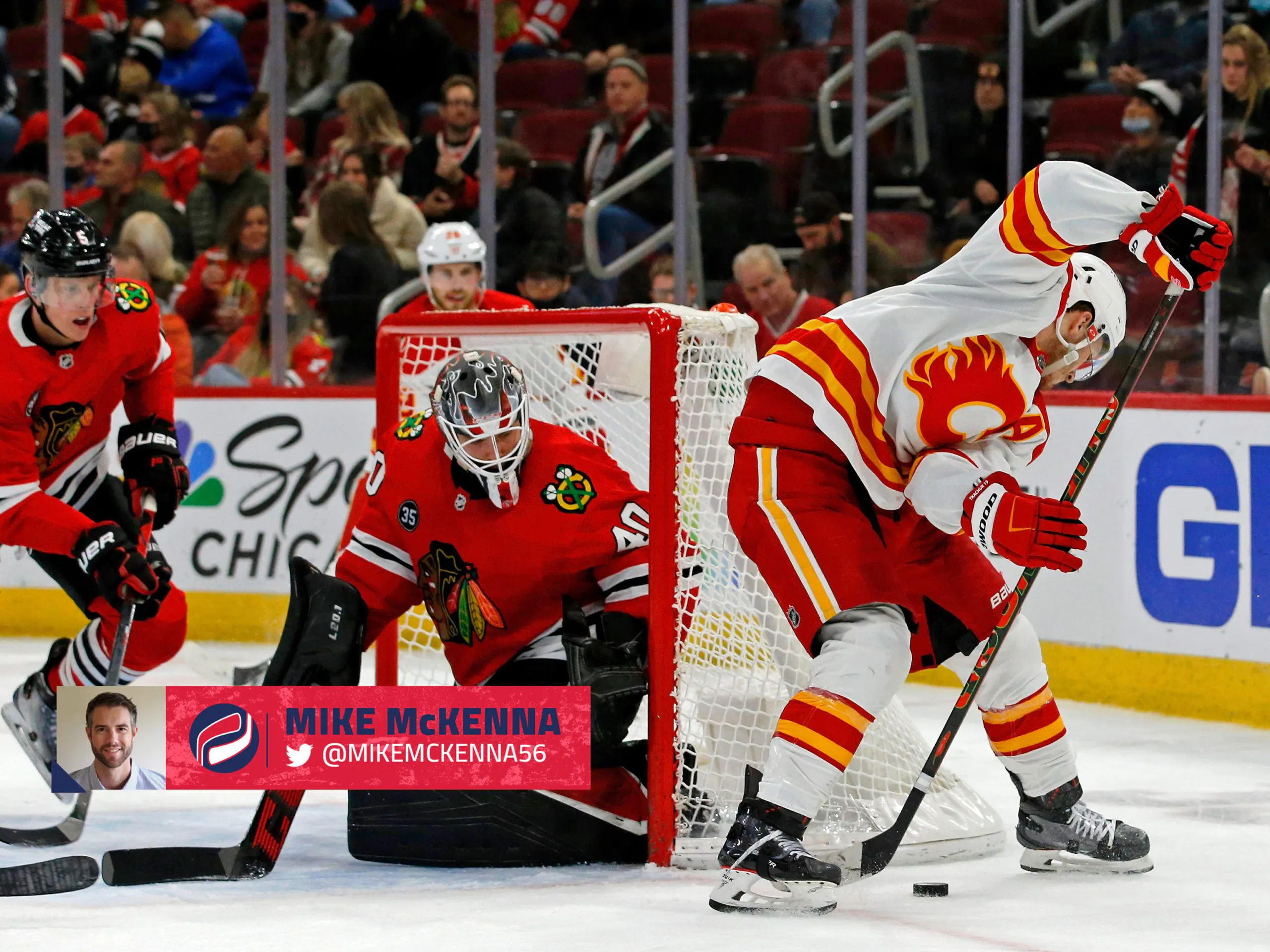Analysis: Have between-the-legs goals been normalized?

Remember when scoring a goal by going between-the-legs was considered taboo in the NHL?
I do. And I remember the uproar every time it happened. The losing team would be offended. Fans would be apoplectic. Coaches would shake their heads in disgust.
Somehow, going between-the-legs became a move that was considered disrespectful. An act meant to purposefully embarrass an opponent. One that flew in the face of uptight hockey culture. Or at least that’s how it was perceived.
Seriously. How dumb.
Scoring goals in the NHL shouldn’t be easy. Finding creative solutions when obstacles are presented should be a virtue. Yet for decades, hockey culture couldn’t get out of its own way. The old guard didn’t want a perceived showoff in the lineup.
Finally, thanks to players like Calgary Flames forward Matthew Tkachuk, things are changing. But it’s taken a really long time for the NHL to get comfortable with players doing things differently.
It wasn’t much of an issue when New York Rangers defenseman Marek Malik went between-the-legs on Washington Capitals goaltender Olaf Kolzig to end a 15-round shootout in 2005. It was a novelty in extra innings.
Throwback to Marek Malik's legendary shootout winner 😂👌
But when San Jose Sharks rookie forward Tomas Hertl scored his fourth goal of the game – and the Sharks’ eighth – against the New York Rangers early in the 2013-14 season, the hockey world collectively lost its mind.
October 8, 2013: 19 year-old Tomas Hertl goes between his own legs and top-shelf for his fourth goal of the game for the Sharks against the Rangers.
Former NHL players warned Hertl of pending retribution for his heinous act. Others opined that the talented Sharks forward needed someone to explain to him how to properly act in an NHL setting, that scoring the eighth goal of the game for your team is okay – so long as you don’t go between your legs and embarrass your opponent.
It makes my head hurt thinking about it. The NHL is constantly trying to increase scoring. But then came big bad 19-year old Hertl, who had the audacity to try something creative on a breakaway
It wasn’t about a goal being scored. It was about how it was scored.
But what gets lost in the discussion is how difficult it is for goaltenders to read a between-the-legs shot. And no one knows better than Martin Biron, the former NHL goaltender who was in goal for the New York Rangers when Hertl scored in 2013.
“The change of angle happens so quickly that it’s very hard (for the goalie) to recover when executed properly,” said Biron, now an NHL analyst based out of Buffalo, N.Y. “For decades (goaltenders) have been trained to see the player taking the puck from backhand to forehand. Between the legs is one that they’d never really seen. It’s not only lateral – it also moves the puck back. And when it moves back, it opens up more room to shoot at.”
And that’s why I never had a problem with Hertl’s goal. It was a legit hockey play and a highly skilled one at that. Not many players back then were capable or confident enough to attempt the move.
Going between-the-legs was once relegated to breakaways like the Malik and Hertl goals. But things have changed rapidly. Players are now increasingly passing pucks through their own feet, like this feed from Florida Panthers rookie centerman Anton Lundell to Maxim Mamin.
And this no-look backhand pass through the wickets to Lundell from Panthers teammate Frank Vatrano.
These plays are all about creating deception. Going between-the-legs is still rare enough that it’s difficult to read.
This subtle redirection by Sebastian Aho of the Carolina Hurricanes is a great example. By putting his stick between his legs, Aho is able to create enough angle to deflect the puck around Boston Bruins goaltender Linus Ullmark.
Hertl’s 2013 goal “was unexpected at the time,” according to Biron. “But now, I think goalies expect it a little bit more knowing it is an option. The move is becoming such a natural weapon.”
But even if goalies have since clued into the technique, it hasn’t stopped Matthew Tkachuk from scoring several highlight-reel goals.
In his youth, the 24-year-old Flames forward turned to the internet for inspiration. And he expects more players to do the same in the future.
“I watched all the YouTube clips and tried to copy them,” Tkachuk said. “I realized I was good at (going between my legs) when I scored my first goal in peewee or bantam. I imagine more players will start trying it because the game is getting more and more skilled.”
But did Tkachuk ever feel nervous about making the move?
“I was never worried about people coming after me,” Tkachuk explained. “Most of the time if you’re good at it, it’s actually the right play.”
Hockey is at the cusp of a creative revolution. Players like Tkachuk and fellow American standout Trevor Zegras have shifted the paradigm in terms of what players can do with the puck and what is acceptable.
There’s a reason why clips of these goals go viral on social media: they’re entertaining. We watch professional sports to see people do and accomplish things we can only dream of.
And that’s exactly what’s taking place in today’s NHL. Players are thinking outside the box and challenging the cultural norms of hockey. I’m here for it.
More from Mike McKenna
- Ranking every NHL goalie tandem for 2023-24
- Staring down Lou: How standing up for yourself can change a player’s career
- Why it’s time to embrace ‘gambles’ like the Jake Sanderson contract
- Why we shouldn’t view Sheldon Keefe’s contract extension as a vote of confidence
- ‘Two Sean O’Connors?’ NHL training camps bring the funny – and the weird